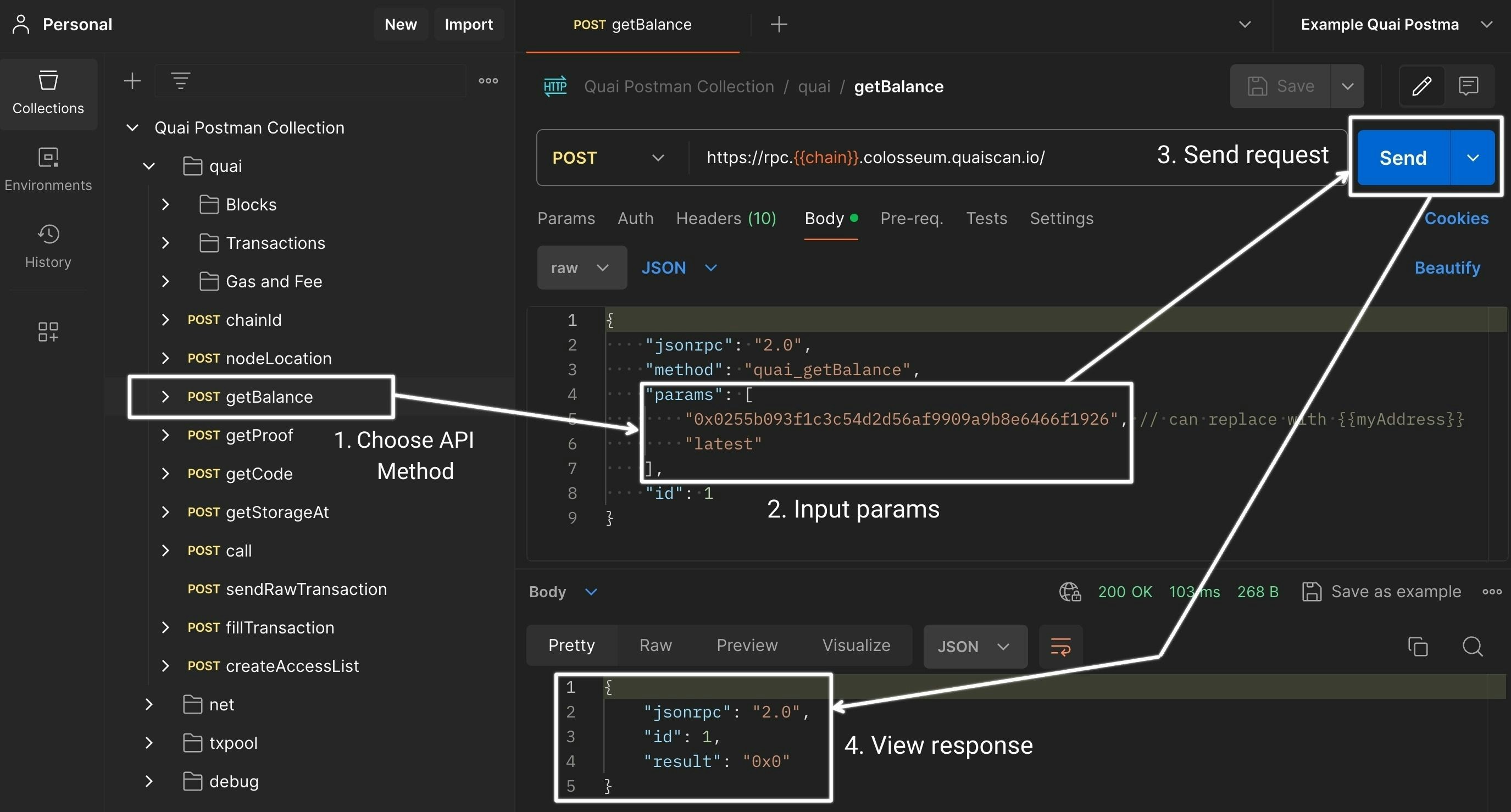This guide assumes you have already installed Postman and imported the Quai Postman
Collection and Example Quai Postman
Environment.
Introduction
Making requests to a go-quai client via the Quai Postman collection is straightforward. The basic steps to making a request are:1
Chose A Request
Select a request from the Quai Postman collection
2
Verify URL
Ensure the URL in the request is correct for the chain you want to interact with (e.g. cyprus1 endpoint for cyprus 1 queries)
3
Edit Params
Edit the request body with the desired parameters (e.g. address, block number, etc.)
4
Send Request
Click the
Send button to make the request5
View Repsone
View the response in the section below the request body
Making Your First Request
To make your first request to a go-quai client, open the Quai Postman Collection in the left sidebar of Postman and select a request from the collection. For example, let’s select thegetBalance request under the quai folder:

getBalance, you’ll be directed to the Params tab for the request. To edit the parameters for the request, choose the Body tab to see the JSON-RPC request body:
0x0255b093f1c3c54d2d56af9909a9b8e6466f1926 with the address you’d like to query. You can also use the {{myAddress}} environment variable to reference your own address if you’ve configured it in the environments tab on the left.
More information on how to configure environment variables like
{{ myAddress }} can be found in the Environment Variables
Guide.Send button to make the request. The response will be displayed in the response section below the request body:
Common Mistakes
Chain and Data Mismatch
Often times sending a request using the Quai Postman Collection can result in one of the following errors:address is not in scope or genesis is not traceable.
If this is the case, it’s likely that the params you are passing to the method call do not correspond with the RPC endpoint you are querying. Ensure that the chain environment variable (or manually set request URL) is set to the correct chain you are querying data from.
Example:
- Querying the URL:
https://rpc.cyprus1.quaiscan.iowith agetBalancerequest for an address that only exists onhydra3:0xfbca7e03dc8b5c4cc327c92de8ba1af66d34ac70.
Non-Existent Data
When sending requests related to blocks or transactions, often times the node will return an error related tomethod handler crashed or no data found. This is often due to the block or transaction hash not existing on the chain you are sending the request to.
Ensure that the block number or transaction hash you are providing exists on the canonical chain you are querying.
Example:
- Requesting block data for block 10000 when the chain you are querying only has 5000 blocks.
